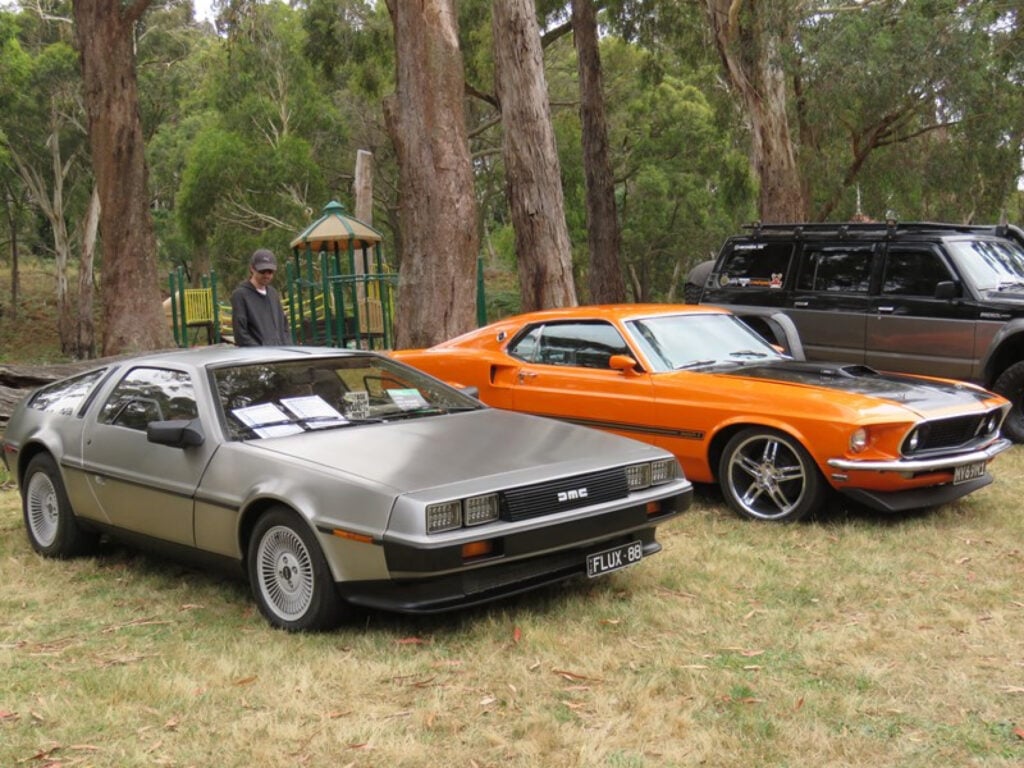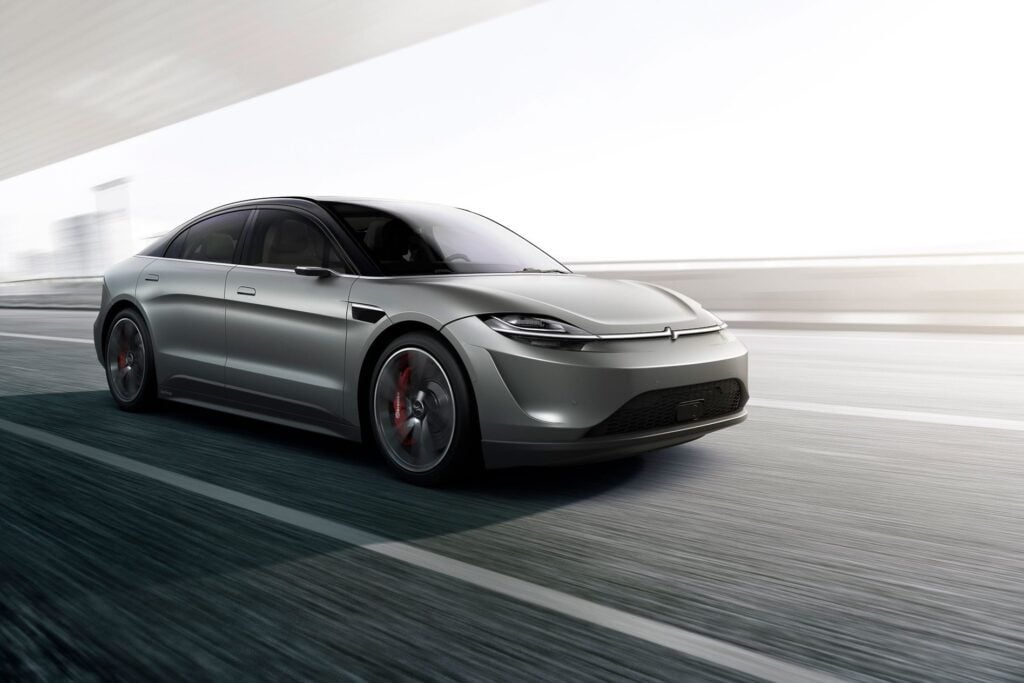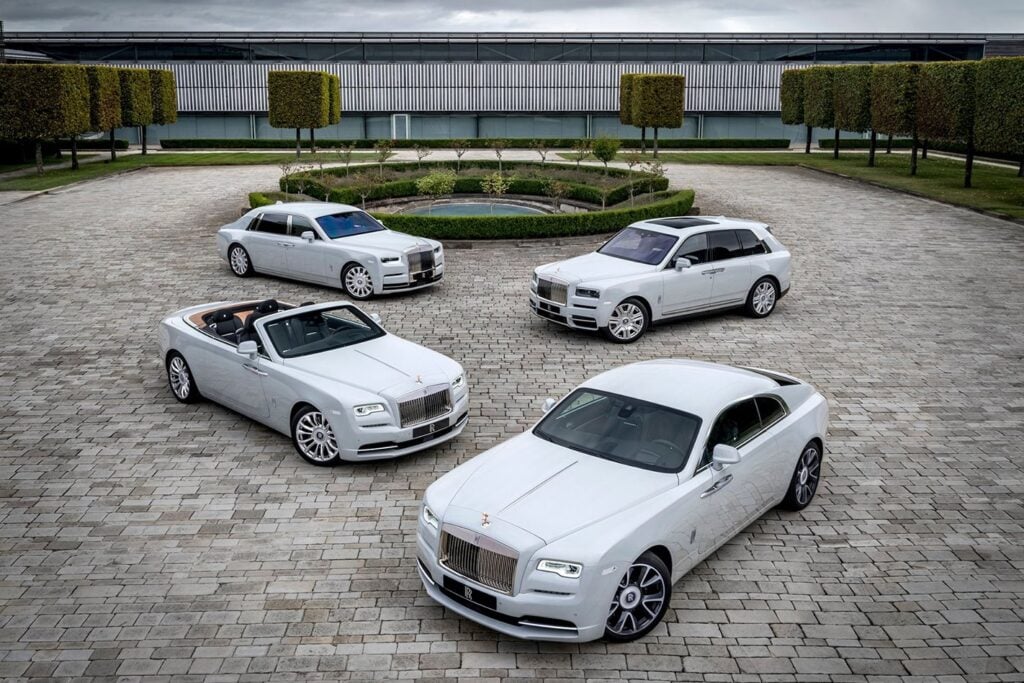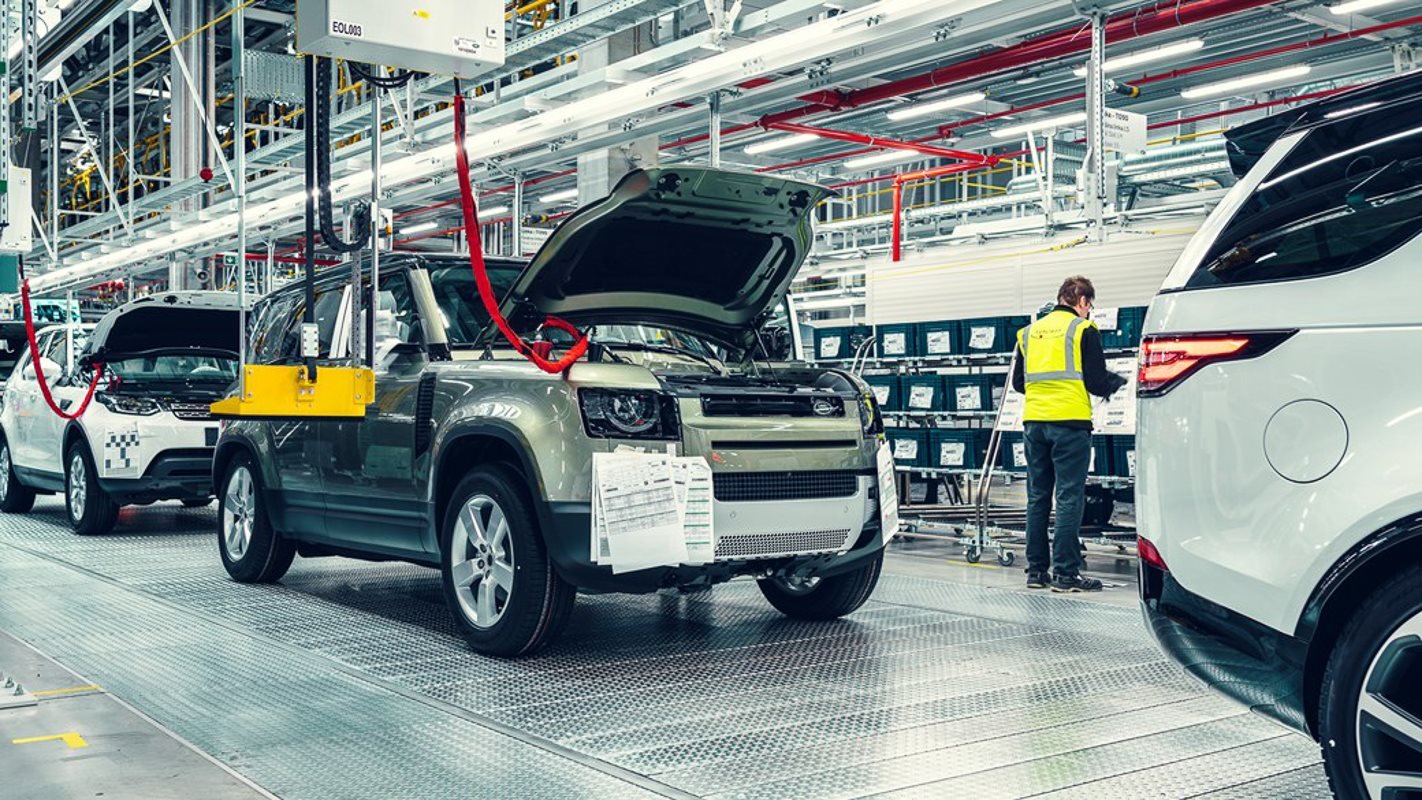
Unless you’ve been stranded off-road with no phone signal, you’ll know the Land Rover Defender has just returned, very much modernised, after production of the old model ended at Solihull in 2016.
But the off-road icon’s updated design and monocoque construction aren’t the only radical shake-ups with which its loyal fanbase must grapple: the new model’s manufacturing also breaks with a tradition that dates back to 1948, as it switches from Solihull to Slovakia.

Solihull has not closed: it continues to produce the Jaguar F-Pace, and all Range Rovers bar the Evoque. Jaguar Land Rover has also invested in building ‘the next generation of flagship Range Rover and Land Rover models’ there. Still, removing all Defender production from the UK is a big deal.
We first had a go at the new Defender in Namibia at the start of the year but now we’ve also had a tour of the new facility that has been busy minting the first new Defenders.
MORE DEFENDER NEWS
The result of an ambitious billion-dollar investment, it’s located in Nitra, a city of 76,000 that lies 90 minutes’ drive east of Vienna, and from its freshly laid, thinly trafficked access roads to the space around its factory buildings, I’m reminded of those child’s town-centre play mats imprinted with a bird’s-eye view of roads and trees and buildings; there’s just so much blank-sheet space, order and simplicity here.“It wasn’t even a construction site when I first visited in March 2017,” remembers body shop director Christian Classon, previously of Ford and Tesla. The entire ground level was lifted by 1.5 metres on a bed of gravel to protect it from flooding. Then, after extreme cold weather briefly halted work on laying foundations, 27,000 steel piles were driven 10 metres in to the ground, the concrete laid and the facility officially opened in October 2018.
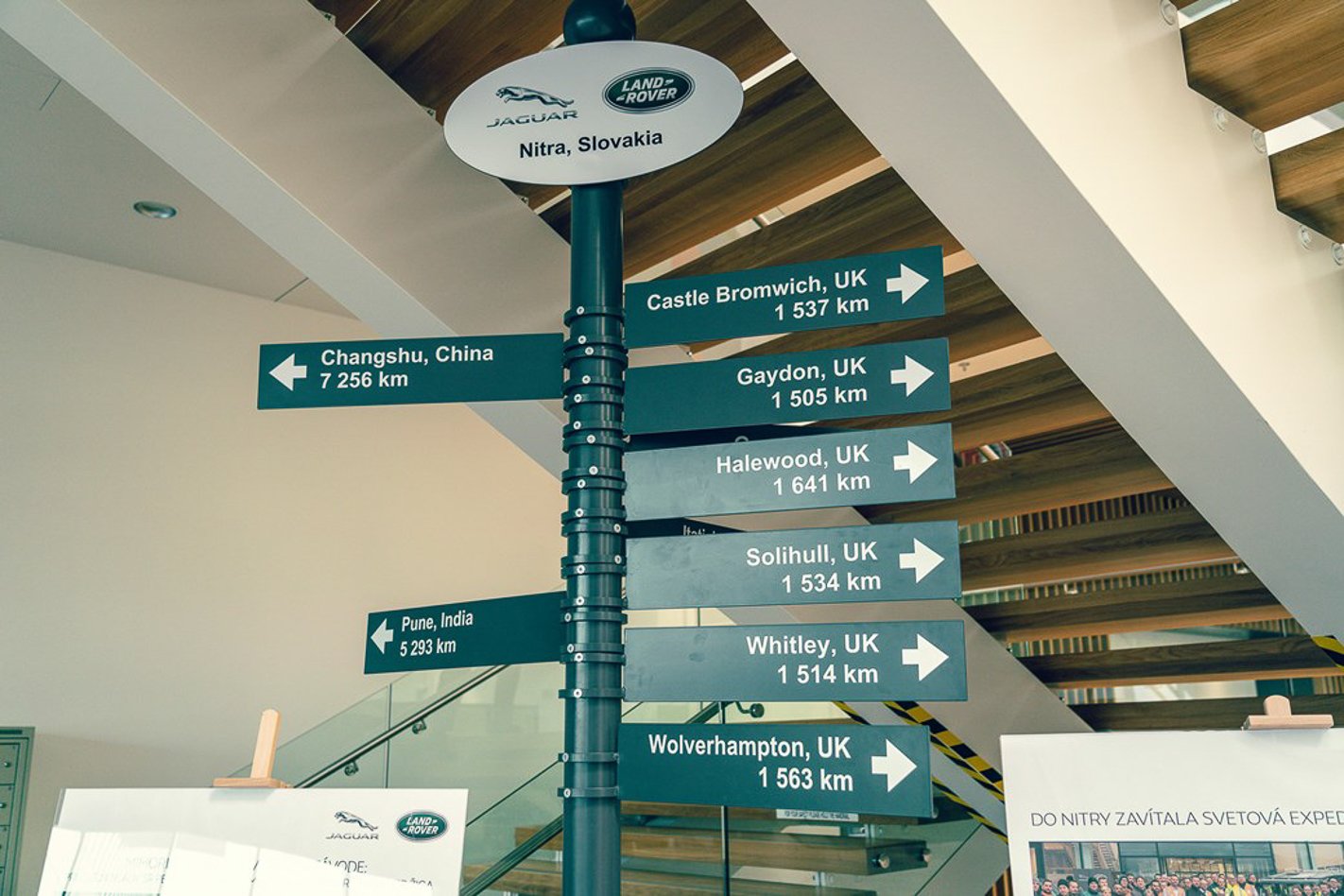
There are three main buildings: the body shop (90,000 square metres), paint shop (53,000 square metres), and the ‘trim and final’ area (134,000 square metres). The factory employs 2000 people, with a further 20,000 jobs created in the supply chain; next door, for instance, supplier Gestamp produces aluminium body pressings. Many components are locally sourced, including seats and wheels, though some, including the Ingenium engines, are shipped from the UK.
Nitra has the capacity to build around 150,000 cars annually over three shifts, and there’s space to expand, though the current two shifts peg that at 110,000 – around a quarter of total annual Land Rover production, and a far cry from Solihull’s capacity; it maxed out at around 120 Defenders daily on one shift as enthusiasts panic-bought the last of the previous generation.
We’re visiting Nitra towards the end of the day’s first 6am to 2.15pm shift, so the lines of double-parked buses that disgorge the next shift (2.15pm to 10.30pm) and take the current workers away won’t be here for a couple of hours. For now only a few workers file through the security turnstiles, past a display Defender that straddles a rock garden, and into the large reception area. There are strong echoes of Land Rover’s Gaydon headquarters to the materials and layout inside, as well as a signpost listing the distance to JLR’s other global operations, including 1534km to Solihull, 1505km to Gaydon and 1514km to Whitley.
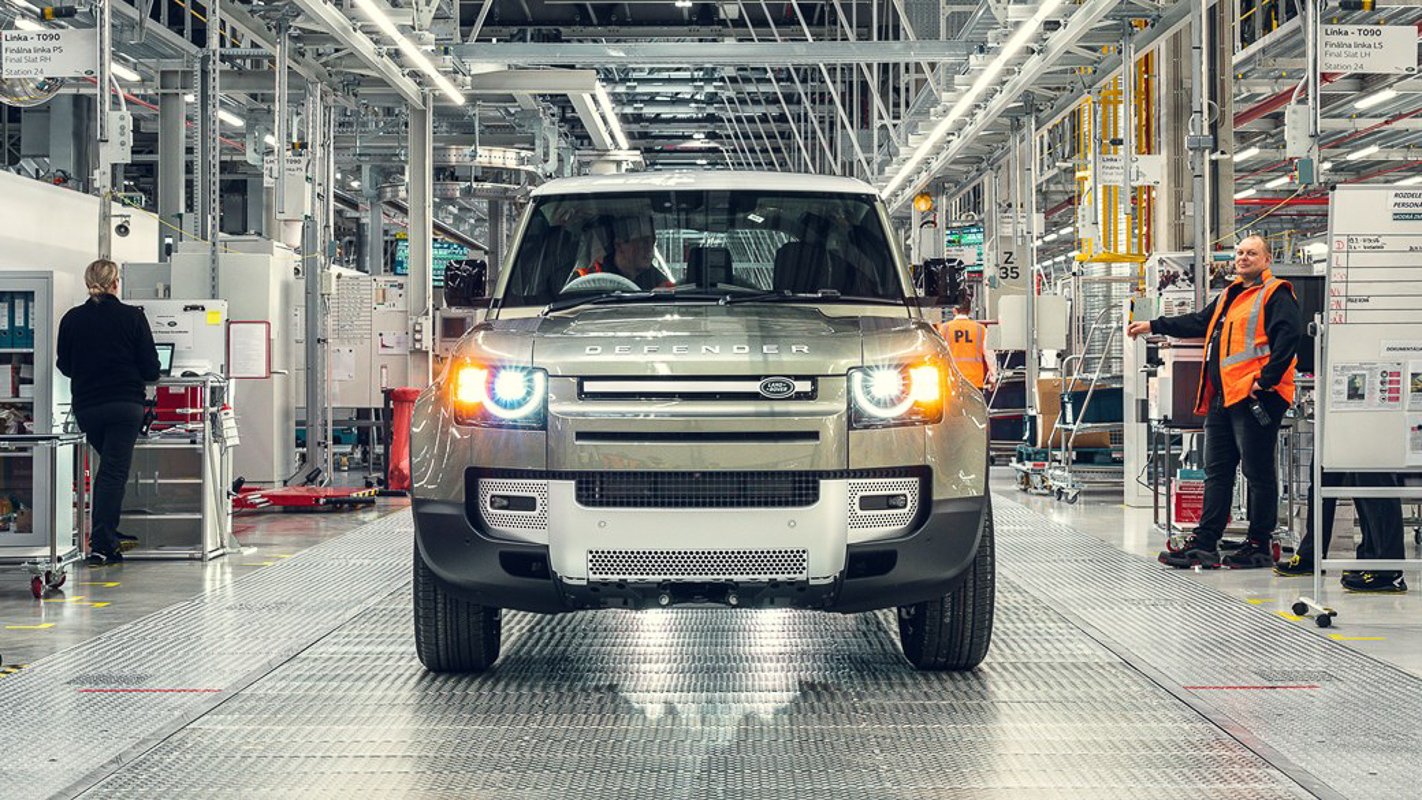
Also familiar is the Brummie accent of operations director Russ Leslie, who used to work on the Discovery 3 production line at Solihull after being made redundant from an accountancy job at a building firm in the early ’90s. Leslie has form with this kind of thing, most notably as planning and launch director for JLR’s Chinese plant in 2011. He’s as grounded, easy to chat with and likeably direct as his background suggests.
Leslie explains JLR wanted to continue to expand its global footprint, as it has done in recent times with its facilities in China, Brazil and India and contract manufacturing in Austria. A bigger footprint helps protect against currency fluctuations, and Slovakia was chosen over a highly competitive Mexican bid thanks to an affordable workforce and the breadth of existing infrastructure and suppliers. And €125 million (AUD$204 million) of government aid also helped – it was investigated by the European Commission before being declared okay by EU state-aid rules.
The country certainly has an impressive track record in automotive production: Slovakia became the world’s biggest producer of cars per capita in 2007, and last year this population of 5.4 million knocked out 1.1 million cars. PSA, Kia and the VW Group are already well established, the latter with premium Audi, Porsche and Bentley, a virtuous whirlpool that helped suck in JLR too. The decision to put down roots in Slovakia came in 2015, ahead of the Brexit vote, Dieselgate and the Chinese downturn, at a time when UK plants were at capacity.
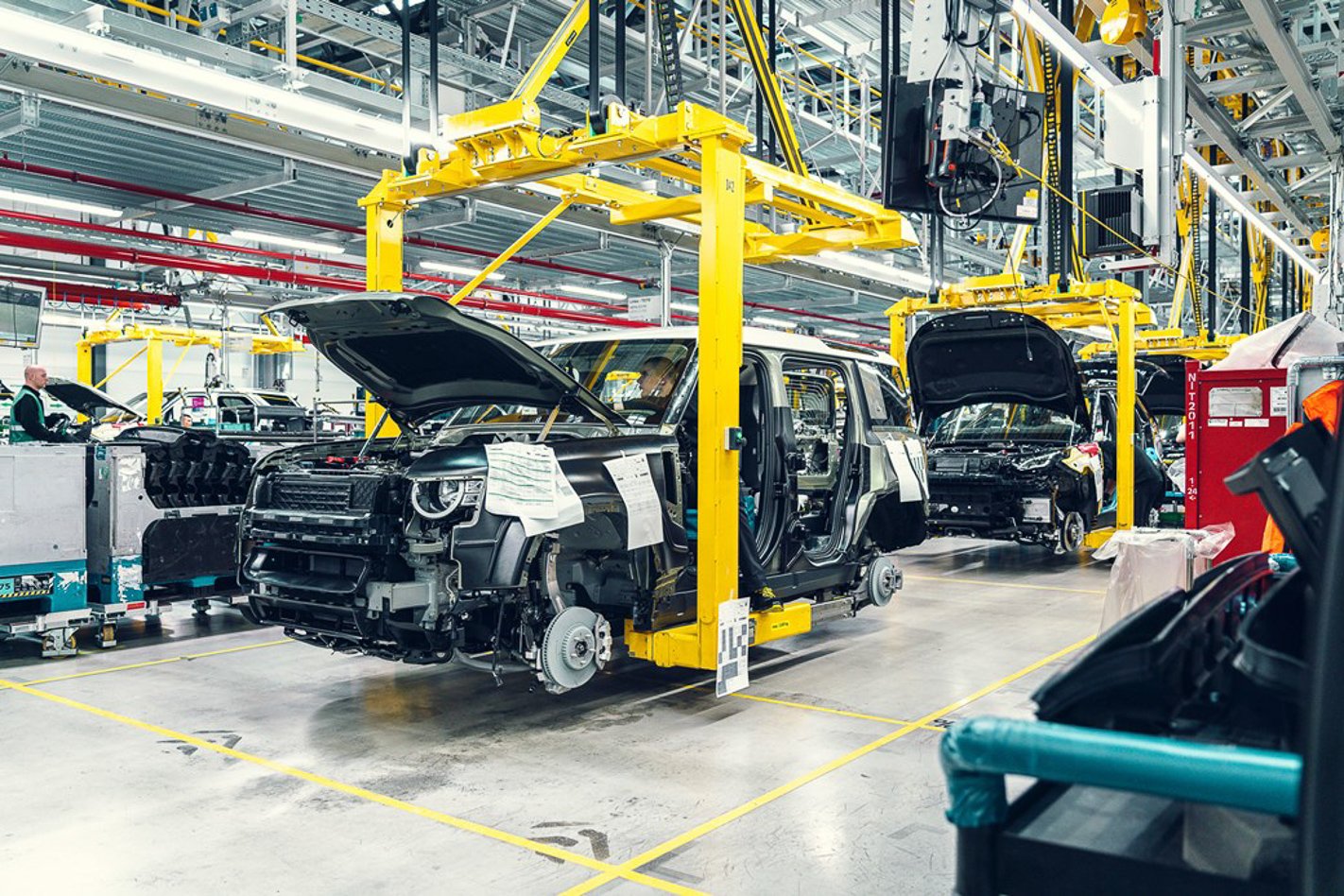
The area around Nitra does not, however, have a long manufacturing tradition, being better known for food and agriculture. JLR’s arrival helped slash the unemployment rate from 11.2 percent to 2.1 percent, the lowest of any Slovakian region. Leslie has overseen the recruitment and training process, which includes a training academy, JLR’s only such facility outside the UK. “Some people were unemployed and needed re-training, others switched from other automotive roles in the region. It’s a six-stage training process that includes dexterity, muscle training and IPS, our integrated production system. It’s tough – not everyone made it.”
A naked aluminium Discovery 5 bodyshell sits in a wide corridor outside the body shop, the first ever produced at Nitra in September 2018 and scrawled with the signatures of employees. The Discovery gave Land Rover a known engineering quantity with which to get the all-new factory up and running; so far Nitra has built 36,000 of them; production ended at Solihull in 2018.
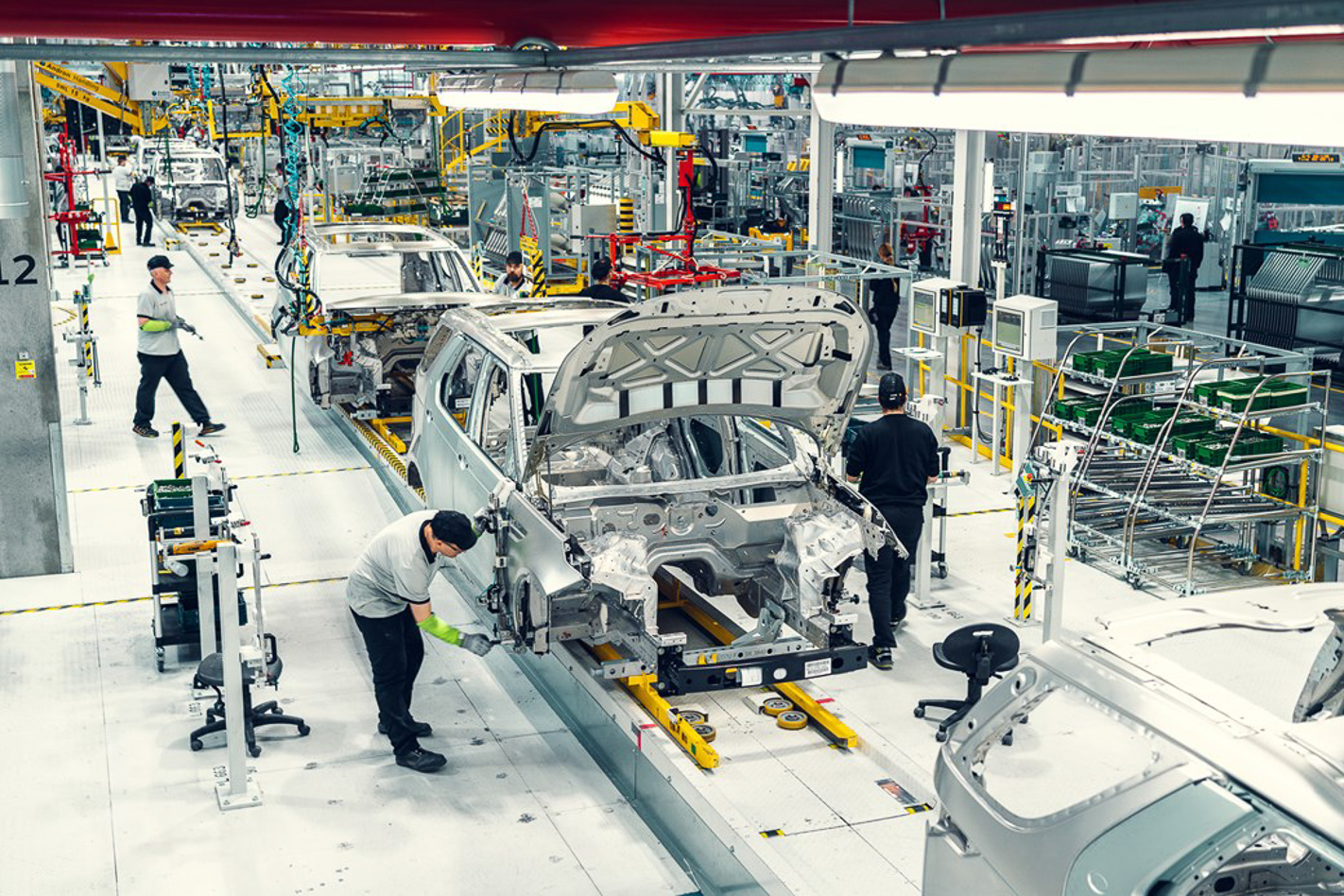
We see the next production run beginning in the body shop. Superficially it looks much like many other modern manufacturing facilities: a sterile environment with squeaky floors painted silver-grey, contrasting with the yellows and reds that demark where you can stand and what you should hold on to, and the structures that carry vehicles around. It’s an environment where you expect men and noise, so two things are striking: the number of women, and the lack of din.
Females make up 30 percent of the workforce, well up on the five percent typically employed by other premium car makers in the region. “The male population working in automotive was going to the bigger companies – VW, PSA – so we had to adapt to the situation and train people that worked in the supermarket into automotive people,” explains Classon.

The majority of employees are Slovaks, with an average age of 37, but their backgrounds are diverse: we meet Luca, a 36-year-old production leader, who worked at Honda in Swindon; and Jana, a 40-year-old group leader who was previously a manager at Tesco.
It’s comparatively hushed in here because manufacturing cars from aluminium is a quieter, cleaner process than steel, with rivets and adhesives used rather than welding. But Nitra is also quieter and cleaner than the more labour-intensive production of aluminium Defenders at Solihull. Workers there would wear earplugs and their overalls would often be coated with grime come shift’s end; it was more physical graft assisted by only 10 robots. Nitra has 624 robots in its body shop alone, most employees wear no earplugs and their uniforms – grey branded polo shirts or black jumpers, black cargo pants and black shoes – appear unmarked, even come clocking-off time.
Production begins with sub-assemblies and aluminium structures, and we see the familiar shapes of Defender body sides hung like shirts on a clothes rail, ready to join the production choreography. The parts feed down a Kuka Pulse production line, a system unique in Europe that’s 30 percent faster than equivalent systems and inspired by a rollercoaster at Cedar Point in the US. A central carbon fibre rail and magnetic fields move vehicles from station to station at speeds of up to 3.6 metres per second, covering 2.7 kilometres in total. The flexible process allows the Discovery and Defender to go down the same line in whatever percentages customer orders demand.
Each station on the production line has a ‘takt time’ of two minutes – manufacturing jargon for the allotted time before the line automatically moves to the next step – and employing 90 maintenance staff minimises downtime.
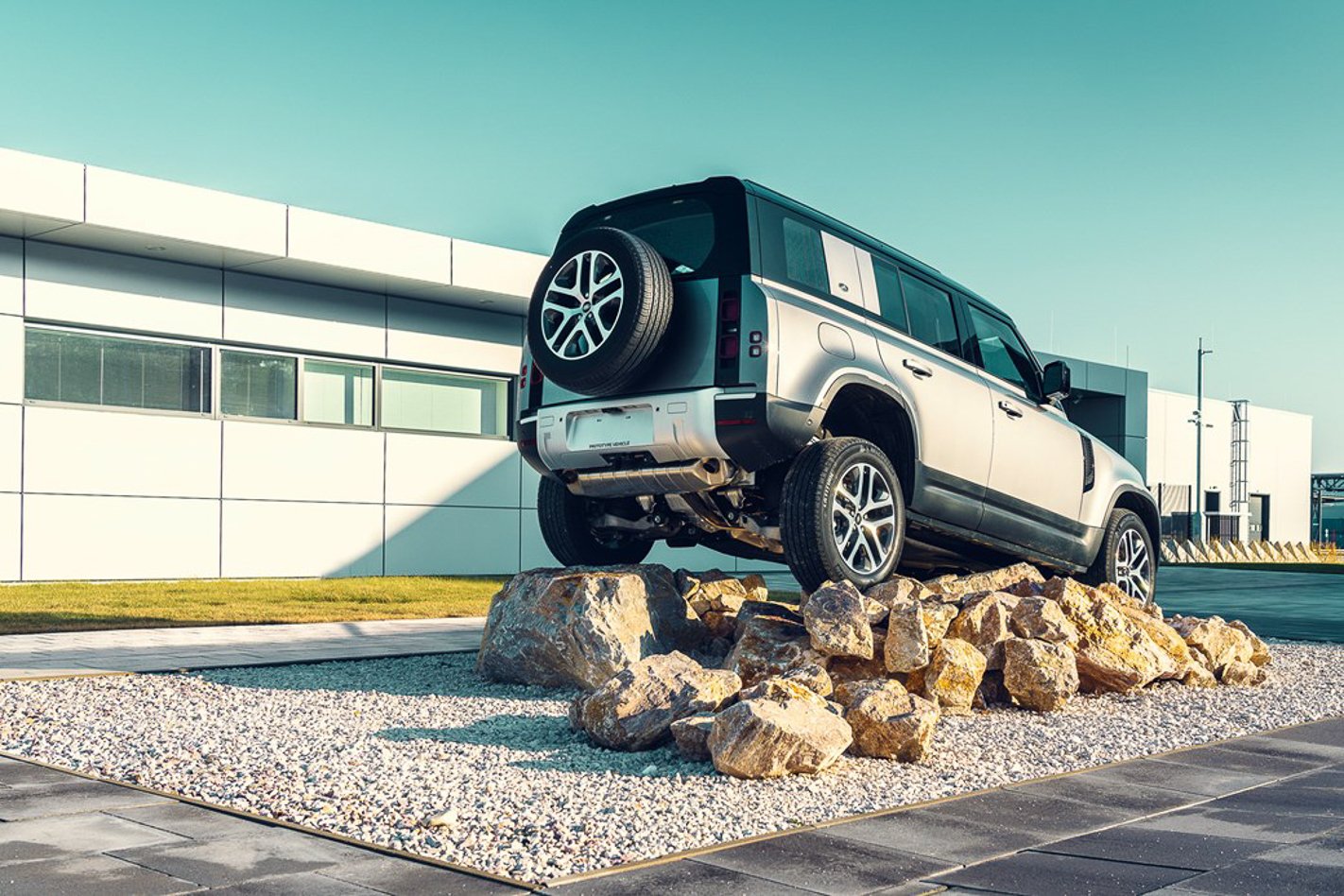
If aluminium is cleaner and quieter than steel, it is also less forgiving, and the Defender bodies must be aligned to within 0.5mm of accuracy as the bodyshell is formed into one piece. This process involves body sides, the underbody and roof being fixed together by 15 robots in an incredibly confined space at a framing station – again, in a maximum of two minutes.
By the time the bodyshell is complete, 3600 rivets of 36 different sizes, 1700 metres of adhesive beads and 400 individual parts have been used, many of them brought to the line by a large yellow autonomous HGV dubbed Zoltan. More people work on the cladding line, where the doors, bonnet, tailgate, bumpers and wings are added to the body. “This is the only process that is manual [in the body shop],” explains Classon. “It could have been automated, but it would have been too big an investment.”
Up to this stage, all Defenders are generic other than having either a 90 or 110 body, but subsequently a small grey box spits out the vehicle identification number – the birth certificate with which a Defender becomes an individual car, destined to have a certain colour, trim, wheels and powertrain.
With the bodyshell complete, each car will pass to the paint shop and its eight work stations. Bodies file through an electro-coating rotational dip system, where they rotate in baths for pre-treatment, before painting by a seven-axis set-up – a kind of Carlsberg system that allows the 64 robots to paint parts other robots cannot reach, and in a smaller spray booth too. Waste paint is absorbed in limestone, which later becomes concrete. So carefully has every detail been considered that you might as well look for a needle in a haystack as a stray bolt on the floor.
Most people are employed in the trim and final area – 1400 employees busy at about 250 assembly stations here, 50 percent of them female, all managed under the watchful eye of Ulas Bagci, a big, friendly, fast-talking man with a physical presence that encourages good behaviour. Bagci learnt the ropes for years at Ford Otosan in Turkey before starting at Nitra in January 2017. He says that if you walk all of ‘trim and final’, you’ll cover two kilometres, and that his team walks around 10km daily. “I sometimes ask them to show me their smartphone, and if they have walked less than me, they have a problem!” he jokes. Ha!

What was a collection of recognisable body parts quickly becomes a car here. A robot pauses to measure the glass and scan a part number of a panoramic roof, carefully applies sealant around its perimeter, and then suddenly swirls round and up, as if breakdancing, to fit the glass panel to a Defender’s roof. A powertrain complete with axle assemblies is hoisted up for the marriage of body and running gear, the moment a Defender gets its ‘soul’, says Bagci.
Near the very end of the line, workers add fixings to the underside of seats suspended in the air, before easing them in to interiors. Wheels are fed in from beneath each car on what looks like an airport luggage belt, the right size and style ready to meet the car as it arrives. Workers can pull a yellow cord for help if that two-minute deadline is likely to slip, and if they pull it three times the line stops. Bagci says the 80kg wiring harness is complex and probably the biggest bottleneck in production.
| 4×4 opinion: Bucket list – driving the Defender Heritage 90
It’s all a long way from Solihull, and not just the 930 miles. In every objective way, it seems, production of the Defender has improved, and many buyers will not care where their Defender is made, just as Triumph customers buy British motorcycles built in Thailand or BMW customers buy German SUVs made in South Carolina. And JLR, let’s not forget, remains committed to Britain, with its vast design and engineering base at Gaydon, and its plants at Halewood, Castle Bromwich, Solihull and Wolverhampton.
Personally, I find myself torn between the economic logic of Nitra and the emotional pull of Solihull, wondering if they shouldn’t have at least kept a Defender footprint in the UK, as they have with Evoque.
Then again, navigating new territory always has been a Defender forte.
This article was originally published at carmagazine.co.uk.

